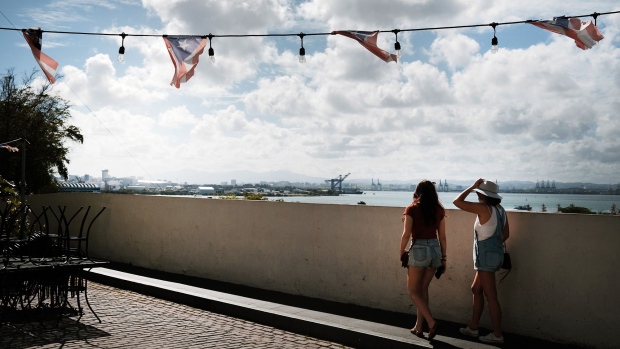Apr 23, 2021
Puerto Rico Projects Bigger Surplus on Influx of Federal Aid
, Bloomberg News

(Bloomberg) -- Puerto Rico is expected to post a cumulative budget surplus of $15.2 billion through 2035 as $123.5 billion of federal disaster funds and coronavirus relief money helps boost the local economy, according to the commonwealth’s latest fiscal plan.
That surplus is crucial because the island’s financial oversight board anticipates using the money to cover Puerto Rico’s debt-service costs. The commonwealth would begin to repay principal and interest on its bonds as soon as January 2022 if it’s able to restructure its debt this year as part of its bankruptcy.
The board released the updated fiscal plan on its website late Thursday. While it pushes out anticipated deficits by four years to fiscal 2036, Puerto Rico Governor Pedro Pierluisi and the island’s legislature will need to implement structural reforms to continue economic growth after the federal cash runs out, Natalie Jaresko, the board’s executive director, told reporters Thursday.
“The flow of federal reconstruction funds provides Puerto Rico with significant strength to help its economy recover, but also with an opportunity to pair this federal investment with the reforms they need to do to turn the recovery into lasting economic growth,” Jaresko said.
The multi-year proposal serves as a framework for Puerto Rico’s yearly operating budgets. The board is set to vote Friday on the fiscal plan.
The release comes as the board has reached tentative deals with bond insurers and rival bondholder groups that would slash $18.8 billion of debt tied to the central government by 61% to $7.4 billion. Those agreements may allow the commonwealth to resolve its bankruptcy this year.
The projected $15.2 billion surplus is for fiscal 2022 through fiscal 2035, the last year before deficits are set to return. That’s a boost from May 2020, when the board approved a fiscal plan reflecting the pandemic’s harm to the island’s economy and included a $5.8 billion surplus from fiscal 2022 through fiscal 2031, with deficits beginning in fiscal 2032.
Still, the $15.2 billion cushion is smaller than the board’s pre-pandemic estimate of an $18.4 billion surplus from fiscal 2022 through fiscal 2037.
The island’s economy is expected to increase this year by 1%, up from an earlier estimate of .5%. It’s projected to then grow in the next four years by a combined 1.4%, compared with an earlier forecast of a 3% contraction during that time.
“Government stimulus, the stimulus that’s provided a lot of this lift, is an important element of any recovery from a severe economic crisis, but it’s not enough,” Jaresko said. “It doesn’t replace a true economic development plan.”
For long-term growth, the fiscal plan includes labor and welfare reforms to boost workforce participation, improvements to K-12 education, reducing hurdles for starting and sustaining a business, and making electricity on the island more reliant and affordable.
If enacted, those changes could increase revenue by nearly $31 billion from fiscal 2022 through fiscal 2051, according to the plan.
©2021 Bloomberg L.P.





